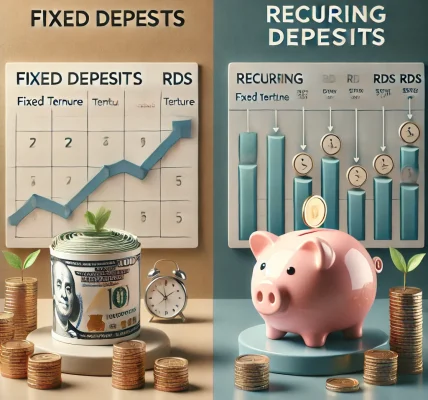Introduction
Saving money is essential for financial security, but high taxes on investment gains can significantly reduce your returns. Fortunately, several tax-free saving plans can help you legally maximize your earnings. These investment options provide tax benefits under government regulations and allow your money to grow without unnecessary deductions.
In this blog, we will explore the best tax-free saving plans, their benefits, eligibility criteria, and strategies to optimize your savings while remaining legally compliant.
Why Choose Tax-Free Saving Plans?
Tax-free saving plans provide several advantages, such as:
✅ Higher Returns: No tax deductions mean more money stays in your pocket. ✅ Government-Backed Benefits: Legal tax exemptions ensure compliance. ✅ Wealth Accumulation: Long-term growth without tax liabilities. ✅ Retirement Security: Tax-free investments help build a strong financial future. ✅ Diverse Options: Different plans suit various financial goals.
Best Tax-Free Saving Plans to Maximize Your Returns
1. Public Provident Fund (PPF)
PPF is one of the most popular tax-free saving schemes in India, offering tax-free interest and maturity proceeds.
- Interest Rate: ~7.1% (subject to government revisions)
- Tenure: 15 years (can be extended in 5-year blocks)
- Tax Benefits:
- Contributions eligible for deduction under Section 80C
- Interest earned is completely tax-free
- Maturity amount is exempt from tax
- Investment Limit: ₹500 (minimum) to ₹1.5 lakh (maximum) per year
Best for: Long-term wealth accumulation and retirement savings.
2. Sukanya Samriddhi Yojana (SSY)
Designed for the financial security of girl children, SSY provides tax-free returns and high-interest rates.
- Interest Rate: ~8% (compounded annually)
- Tenure: Until the girl turns 21 years old
- Tax Benefits:
- Contributions qualify for Section 80C deductions
- Interest earned and maturity proceeds are tax-free
- Investment Limit: ₹250 (minimum) to ₹1.5 lakh (maximum) per year
Best for: Parents saving for their daughter’s education and marriage.
3. Employee Provident Fund (EPF)
EPF is a mandatory retirement savings scheme for salaried individuals, offering tax-free interest and withdrawals.
- Interest Rate: ~8.15% (subject to annual review)
- Tax Benefits:
- Employee contributions qualify under Section 80C
- Interest earned up to ₹2.5 lakh per year is tax-free
- Full withdrawal after 5 years of continuous service is tax-free
Best for: Salaried individuals planning for retirement.
4. National Pension System (NPS) – Tier 1
NPS provides tax-free benefits on retirement withdrawals and offers additional deductions beyond Section 80C.
- Tax Benefits:
- Contributions eligible under Section 80CCD(1) & 80CCD(1B) (up to ₹2 lakh deduction)
- 60% of the maturity amount is tax-free
- Annuity payouts are taxable as per income tax slab
Best for: Retirement planning with long-term wealth growth.
5. Unit Linked Insurance Plans (ULIPs)
ULIPs provide both investment and insurance benefits while offering tax exemptions under Section 10(10D).
- Tax Benefits:
- Premiums eligible under Section 80C
- Maturity benefits are tax-free (subject to conditions)
Best for: Investors seeking tax-free market-linked returns.
6. Tax-Free Bonds
Government-backed tax-free bonds provide fixed income without tax deductions on interest earned.
- Interest Rate: ~6-7% (varies by issuer)
- Tax Benefits:
- Interest earned is completely tax-free
- No tax deduction on principal repayment
Best for: Risk-averse investors looking for stable returns.
7. Voluntary Provident Fund (VPF)
An extension of EPF, allowing employees to contribute more towards retirement savings with tax-free interest.
- Interest Rate: ~8.15%
- Tax Benefits:
- Contributions qualify under Section 80C
- Interest earned is tax-free up to ₹2.5 lakh contributions per year
Best for: Salaried employees looking for higher tax-free retirement savings.
8. Life Insurance Policies
Life insurance policies with a sum assured at least 10 times the premium qualify for tax-free maturity benefits.
- Tax Benefits:
- Premiums deductible under Section 80C
- Maturity benefits tax-free under Section 10(10D) (if conditions met)
Best for: Financial security with tax-saving benefits.
Strategies to Maximize Returns Legally
To maximize returns while staying legally compliant, follow these strategies:
✅ Diversify Your Tax-Free Investments
Combine PPF, EPF, SSY, and NPS to get the best tax-free benefits across different time horizons.
✅ Utilize Maximum Tax Deductions
Ensure you claim deductions under Sections 80C, 80CCD, and 10(10D) for maximum tax savings.
✅ Invest for the Long-Term
Most tax-free plans provide higher returns when held for longer periods, so avoid premature withdrawals.
✅ Choose Government-Backed Schemes
Investing in schemes like PPF, SSY, and EPF ensures security and guaranteed tax-free returns.
✅ Reinvest Interest Earnings
Use tax-free interest from bonds and PPF to reinvest in other tax-saving instruments.
Conclusion
Tax-free saving plans provide a legally safe and effective way to grow your wealth while ensuring financial security. Whether you are a salaried employee, self-employed, or planning for your child’s future, choosing the right tax-free investments can significantly boost your long-term financial health.
🔹 For retirement planning: PPF, EPF, NPS, VPF
🔹 For children’s future: SSY, Life Insurance
🔹 For stable income: Tax-Free Bonds
🔹 For wealth accumulation: ULIPs, Tax-Free Bonds
By strategically utilizing tax-free saving plans, you can maximize returns legally while ensuring long-term financial stability. Start investing today for a secure future! 🚀



